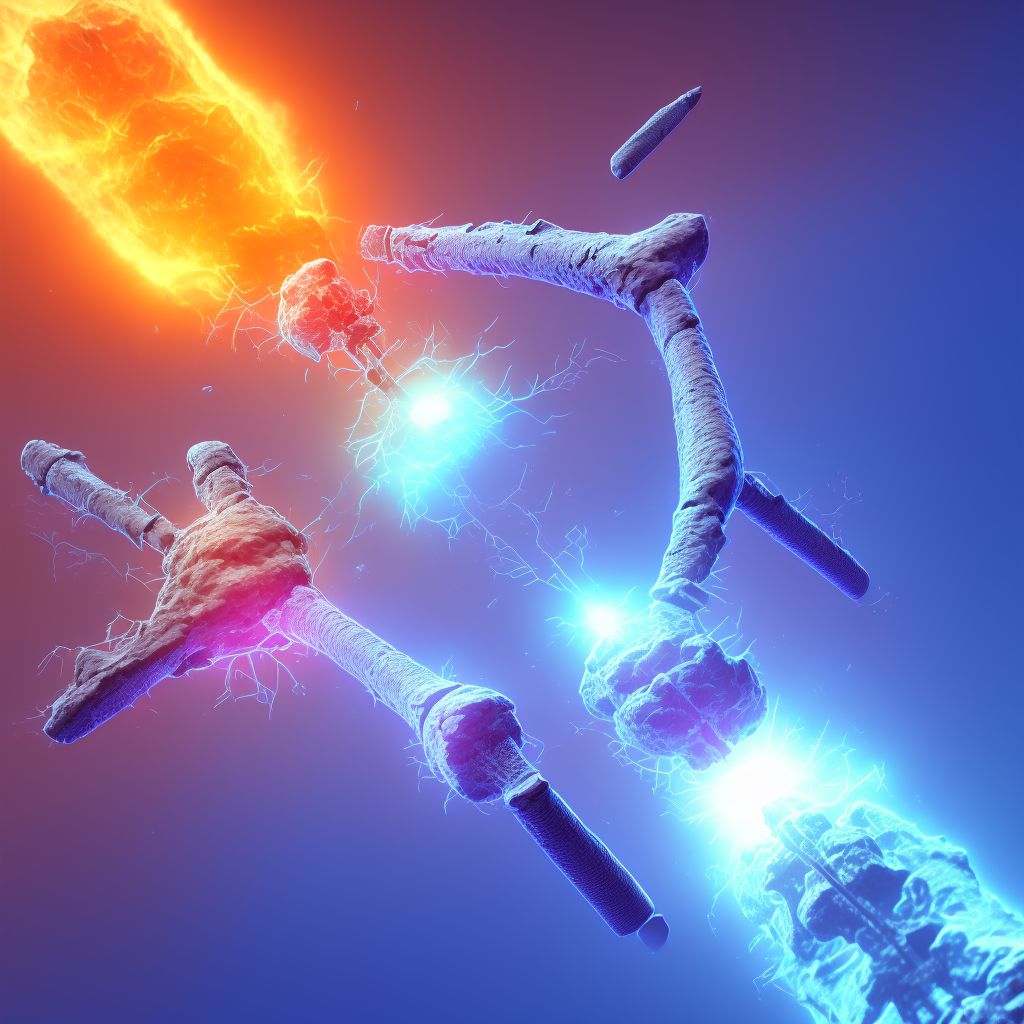
Nondisplaced comminuted fracture of shaft of right tibia, initial encounter for open fracture type I or II Save
ICD-10 code: S82.254B
Disease category: S82.254: Nondisplaced comminuted fracture of shaft of right tibia
Nondisplaced Comminuted Fracture of Shaft of Right Tibia: Understanding an Initial Encounter for Open Fracture Type I or II
When it comes to bone injuries, a nondisplaced comminuted fracture of the shaft of the right tibia can be a challenging condition to deal with. In this article, we will explore the initial encounter for open fracture type I or II, providing valuable insights into its diagnosis and management.
1. Diagnosis:
The first step in managing a nondisplaced comminuted fracture of the shaft of the right tibia is to accurately diagnose the condition. This is typically done through a series of diagnostic tests, including X-rays, CT scans, and physical examinations. These assessments help identify the severity of the fracture and determine the appropriate course of action.
2. Understanding the Fracture:
A nondisplaced comminuted fracture refers to a bone break where the fragments remain in their anatomical position, despite being fragmented into multiple pieces. The shaft of the right tibia is the long bone located in the lower leg, and a comminuted fracture involves the bone breaking into several small fragments. Open fractures, specifically type I or II, indicate that the bone has penetrated the skin, increasing the risk of infection.
3. Initial Encounter:
During the initial encounter for an open fracture type I or II, the main focus is on assessing and stabilizing the injury. The primary goal is to prevent further damage, control bleeding, and reduce the risk of infection. This is achieved through various means, such as immobilizing the affected limb, cleaning the wound thoroughly, and administering tetanus prophylaxis to prevent tetanus infection.
4. Follow-Up Care:
After the initial encounter, the patient will require ongoing care and monitoring. This includes regular check-ups, X-rays, and assessments to evaluate the healing progress. Adequate pain management and physical therapy may be recommended to ensure optimal recovery.
- Conclusion:
A nondisplaced comminuted fracture of the shaft of the right tibia, particularly when accompanied by an open fracture type I or II, requires prompt medical attention and proper management. By accurately diagnosing the condition, providing immediate care during the initial encounter, and following up with appropriate treatment, patients can expect a smoother recovery process.
Remember, it is crucial to consult a healthcare professional for an accurate diagnosis and personalized treatment plan for any medical condition.
Treatment of Nondisplaced comminuted fracture of shaft of right tibia, initial encounter for open fracture type I or II:
Treatment Options for Nondisplaced Comminuted Fracture of Shaft of Right Tibia
A nondisplaced comminuted fracture of the shaft of the right tibia is a complex injury that requires appropriate and timely treatment to ensure proper healing and restoration of function. The initial encounter for an open fracture of type I or II necessitates immediate medical attention to prevent compli...
To see full information about treatment please Sign up or Log in